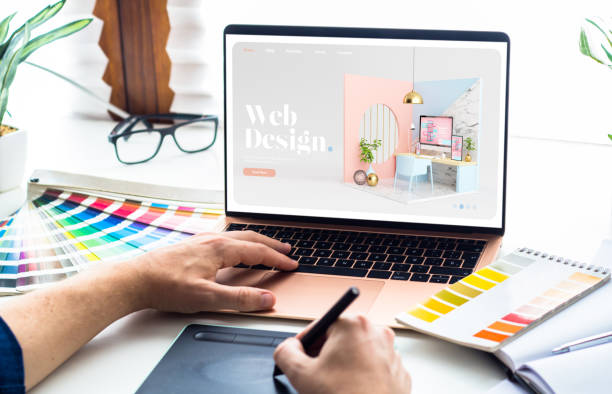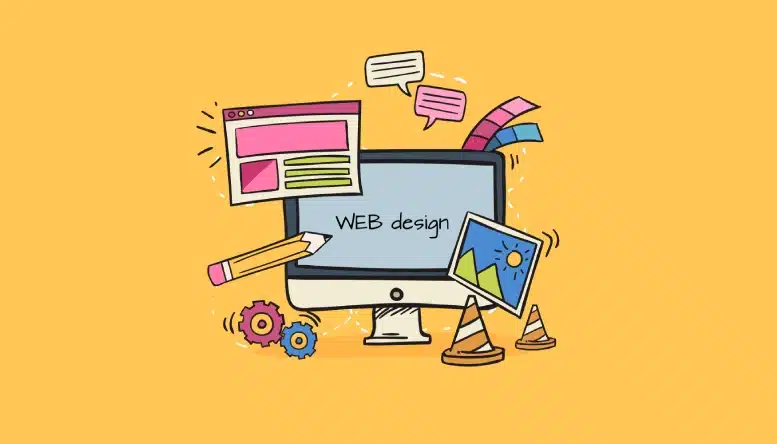Innovative Internet Design Solutions for Modern and Engaging Internet Sites
In the realm of web design, the pursuit of modern and engaging solutions has actually come to be significantly essential for companies aiming to capture user attention. By incorporating vibrant color plans, interactive elements, and receptive formats, developers can develop experiences that not just reverberate with individuals but also boost brand name identity.
Embracing Vibrant Shade Plans
In website design, the strategic usage of bold shade plans can dramatically boost user interaction and brand identity. By using dynamic hues, developers can produce visually striking internet sites that catch focus and promote an unforgettable experience. A well-chosen shade combination not just shows a business's worths but additionally evokes certain feelings that can influence individual behavior.
Vibrant colors can be used to direct customers' interest to crucial elements such as contact us to action, improving conversion prices. Making use of contrasting colors for switches and web links can make these elements stand out, motivating users to interact even more readily. Moreover, a natural color design throughout the site strengthens brand name acknowledgment, creating a sense of knowledge and depend on amongst visitors.
Nevertheless, it is critical to balance bold colors with appropriate white space to stay clear of frustrating users. Effective use typography likewise enhances vibrant shades, ensuring readability while maintaining visual allure. Ultimately, accepting strong color design in internet style not just raises visual high quality however also plays an important duty in attaining calculated organization purposes, making it a crucial factor to consider for modern-day internet growth.

Utilizing Interactive Components
Interactive aspects are important in modern-day website design, as they substantially enhance individual engagement and develop a much more vibrant browsing experience. By including features such as computer animations, hover impacts, and clickable components, sites can urge users to discover material a lot more thoroughly and return for future visits.

Micro-interactions, such as refined computer animations when a switch is clicked or a type is submitted, can also boost the customer experience by supplying instant feedback. These small information can make the web site feel more responsive and to life, fostering a feeling of link between customers and the website.
Moreover, gamification elements, such as benefits for completing certain actions, can encourage individuals to involve with the content a lot more deeply. By thoughtfully incorporating these interactive components, web developers can create a remarkable and engaging on the internet experience that resonates with individuals and urges them to return.
Executing Receptive Design
Executing receptive design is vital in today's multi-device landscape, ensuring that web sites give an optimal viewing experience throughout blog here numerous screen sizes. As individuals significantly access the internet with smart devices, tablet computers, and desktops, a one-size-fits-all method is no much longer sensible. Responsive design enables smooth navigating and communication, adapting layout and material to fit the gadget being made use of.
Trick principles of responsive design include fluid grids, versatile pictures, and media questions. Liquid grids make use of relative units, such as percentages, instead of taken care of pixels, allowing components to resize proportionately. Adaptable photos range within their consisting of components, preventing overflow and maintaining visual integrity. Media queries facilitate the application of different designs based upon the tool's features, such as size, elevation, or resolution, enabling designers to tailor the user experience efficiently.
Additionally, responsive design boosts search engine optimization performance, as search engines prefer mobile-friendly websites. By executing responsive layout, services not only improve customer fulfillment and interaction but additionally increase their reach in a competitive digital landscape. As modern technology remains to advance, taking on responsive layout has become a basic method for any type of contemporary and interesting web site.
Integrating Multimedia Web Content
Multimedia content plays a vital function in creating interesting and dynamic internet experiences that capture customers' attention and improve understanding. By integrating message, images, sound, and video, web sites can provide a richer story that appeals to different learning styles and choices. This combination not just reinforces individual interaction yet also help in sharing complicated concepts succinctly.
Incorporating top notch images and infographics can separate textual web content, making it more absorbable. Similarly, video clip tutorials and discussions can provide thorough understandings that static content might not totally communicate. Audio aspects, such as podcasts or history songs, can additionally enhance the environment of a web site, developing a more immersive experience.
Furthermore, the calculated use of multimedia can enhance search engine optimization efficiency, as internet search engine prefer varied web content types, increasing visibility. It is essential to guarantee that multimedia elements do not hinder page load times, as this can lead to customer frustration. By stabilizing multimedia assimilation with efficiency considerations, web designers can create aesthetically enticing and practical web sites that resonate see here now with users, cultivating a much deeper link and encouraging return gos to.
Prioritizing Individual Experience

To achieve an optimum customer experience, developers need to focus on several key concepts. Clear telephone calls to activity, understandable typography, and organized content overview customers, minimizing cognitive tons.
Ultimately, focusing on UX not only raises user complete satisfaction yet likewise drives involvement and conversion rates, making it an essential aspect of modern-day web design approaches. By placing customers at the center of style initiatives, websites can produce long-term, positive perceptions that urge return check outs.
Verdict
Finally, contemporary website design remedies that emphasize strong color design, interactive aspects, receptive layout, and multimedia content considerably boost customer engagement and fulfillment. Focusing on customer experience through clear layouts additional hints and constant feedback additionally adds to boosted conversion rates. By adopting these techniques, web sites can properly astound site visitors and reinforce brand name identification, inevitably bring about a more dynamic and appealing online existence. The combination of these style concepts is necessary for attaining modern-day internet layout purposes.